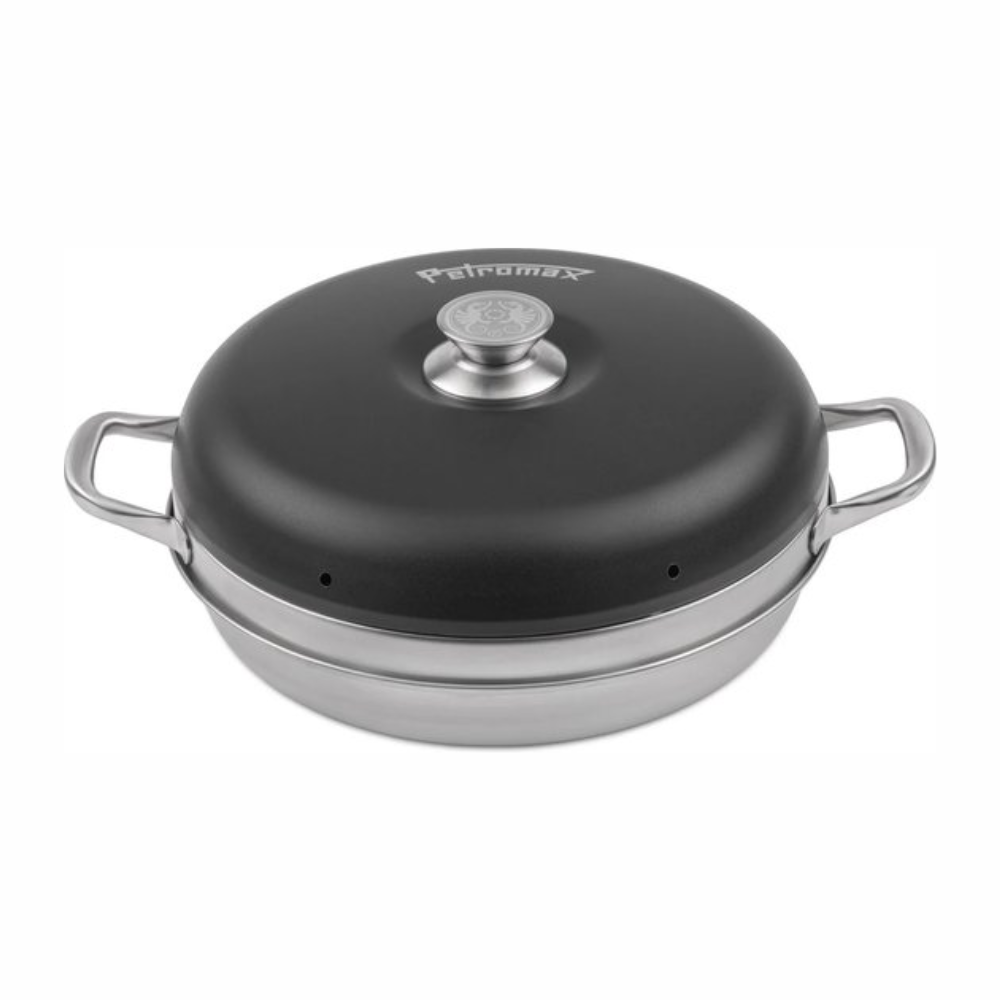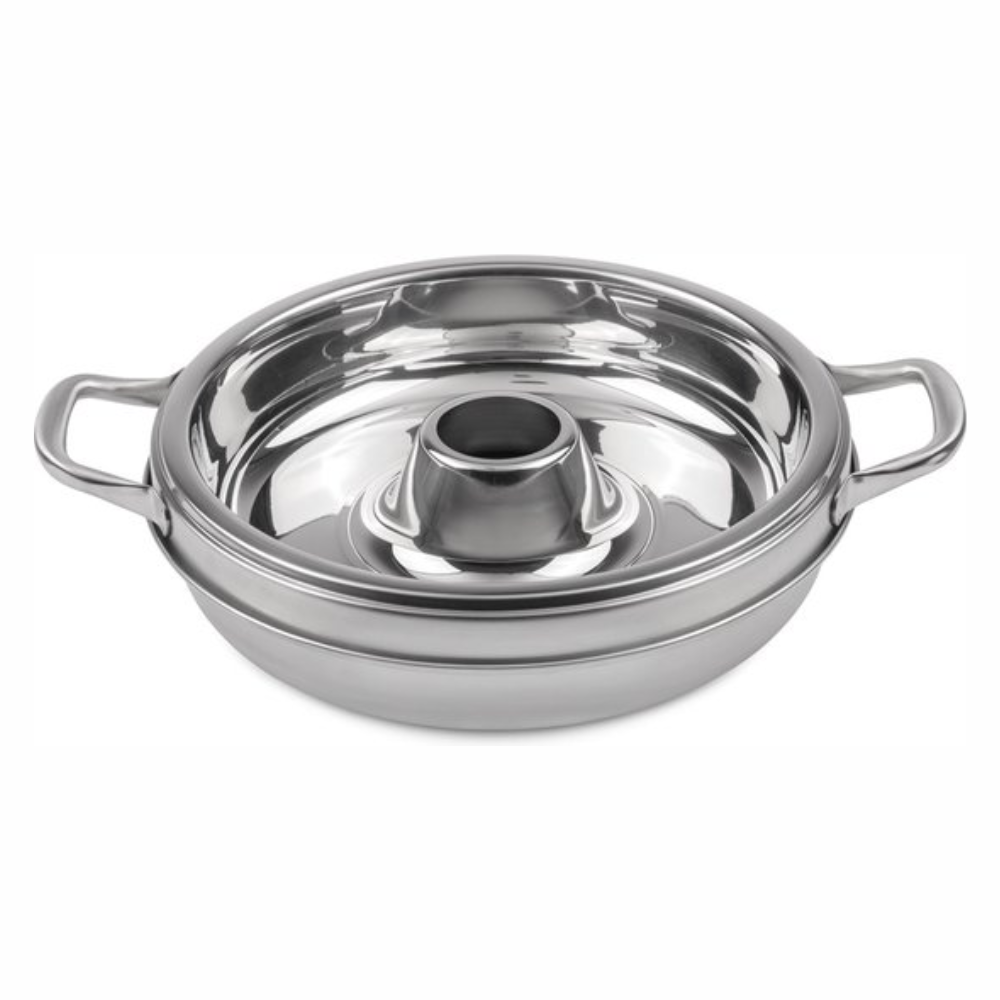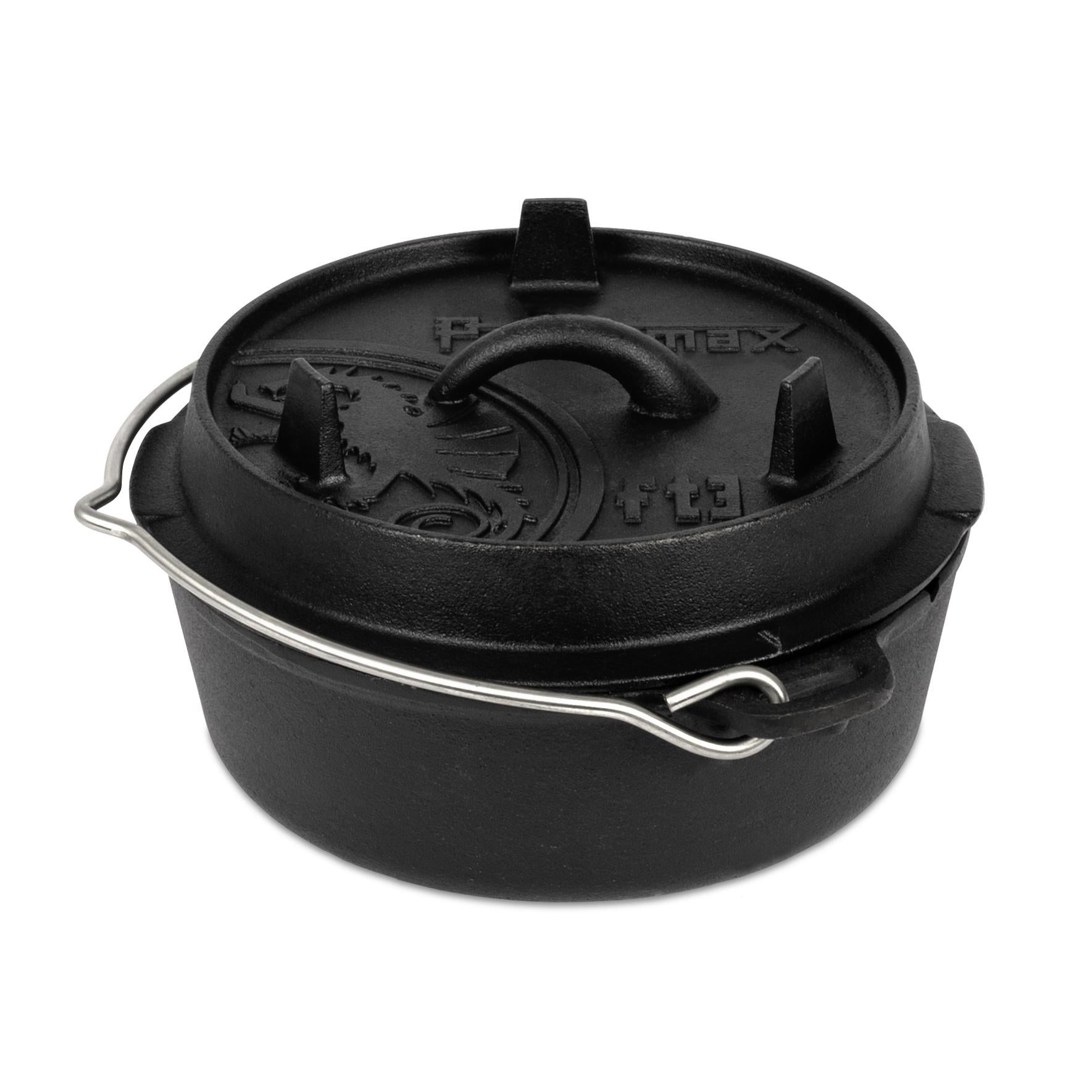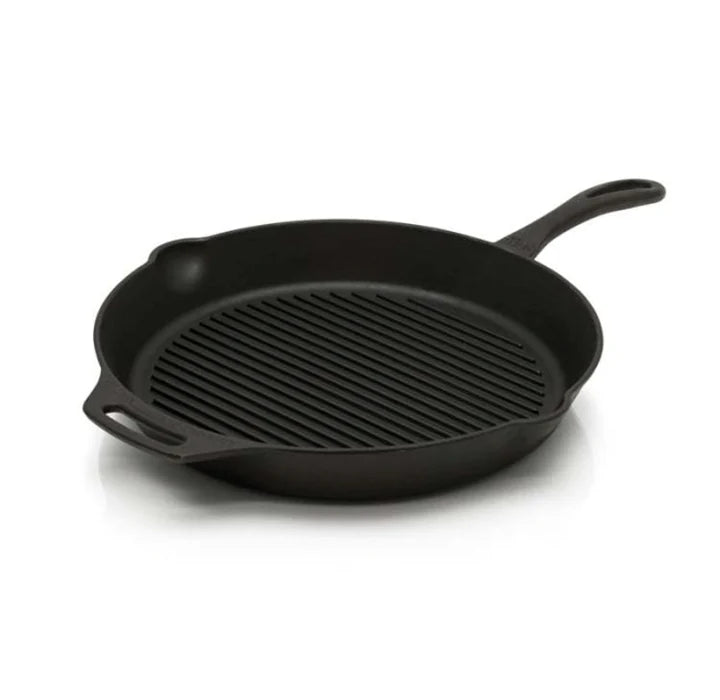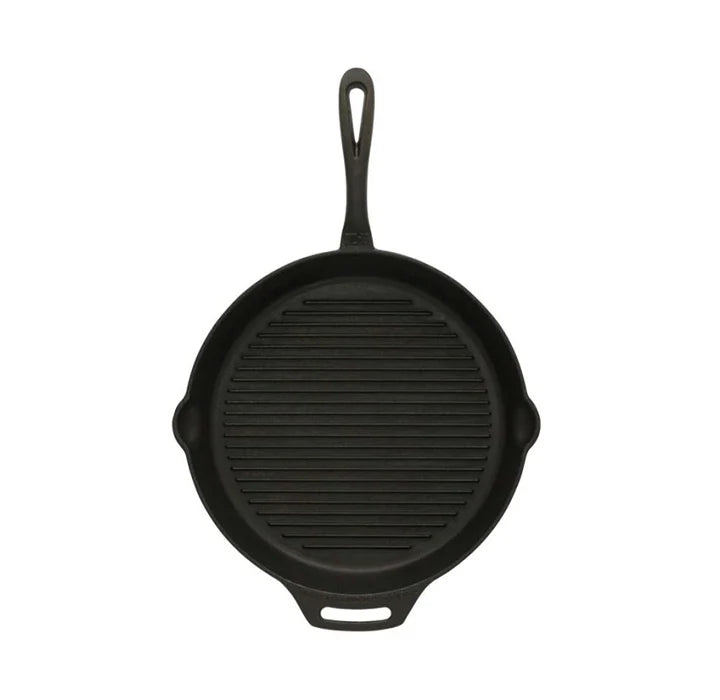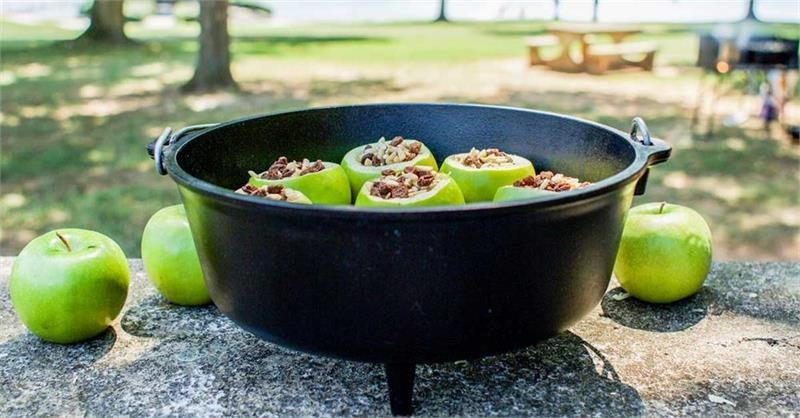
HOE BEHANDEL JE EEN DUTCH OVEN?
Bekijk onze Dutch ovensDutch oven

De ultieme pan voor buitenkoken
De Dutch Oven is dé alleskunner voor iedere outdoor kookliefhebber. Deze robuuste gietijzeren pan is gemaakt om jarenlang mee te gaan en blinkt uit in veelzijdigheid. Of je nu kookt op een kampvuur, houtskool, gasbrander of oven – met een Dutch Oven tover je moeiteloos de lekkerste gerechten op tafel.
Of je nu stoofpotten, versgebakken brood, sappig vlees, pizza of zelfs desserts wilt maken – deze pan kan het allemaal. Met de juiste technieken haal je het maximale uit jouw outdoor kookervaring.

wat is het

Wat is een Dutch Oven precies?
Een Dutch Oven is een zware gietijzeren pan met een dikke wand en een goed afsluitende deksel. Dit zorgt voor:
Uitstekende warmteopslag en verdeling
Constante temperatuur voor langzaam garen en stoven
Perfecte resultaten bij bakken, braden, frituren of sudderen
Tip: Leg je briketten of kolen ook op het deksel, dan verandert je Dutch Oven in een volwaardige oven in de buitenlucht. Ideaal voor brood, ovenschotels of lasagne.
Of je nu kampeert, bushcraft beoefent of kookt in de achtertuin de Dutch Oven is een onmisbaar onderdeel van je outdoor uitrusting.

Inbranden

Dutch Oven inbranden
Essentieel voor een lange levensduur
Voor je nieuwe gietijzeren pan zijn eerste avontuur begint, moet je hem inbranden (seasonen). Dit proces legt een natuurlijke antiaanbaklaag aan en beschermt het gietijzer tegen roest.

Stappenplan: inbranden

Stappenplan voor inbranden
Verwarm de pan tot ongeveer 150°C dit kan in de oven of boven 6 à 8 briketten.
Verwijder de fabriekscoating met keukenpapier of een zachte doek.
Wrijf de pan in met de Petromax onderhoudswax of olie gebruik een dun laagje van de wax, of geur- en smaakloze plantaardige olie op binnen- én buitenkant.
Laat de wax inbakken zet de pan 1 uur op 150°C en laat hem daarna rustig afkoelen.
Je pan is nu klaar voor gebruik en zal met elke kooksessie beter worden!

Schoonmaken & onderhoud

Schoonmaken en onderhouden van je Dutch Oven
Een goed onderhouden Dutch Oven kan generaties meegaan. De sleutel is zorg en routine.
Zo houd je jouw pan in topconditie:
Reinig met heet water en een zachte borstel of houten spatel.
Gebruik geen agressieve schoonmaakmiddelen of schuursponzen.
Laat aangekoekte resten even weken en schraap ze voorzichtig los.
Droog altijd direct na het schoonmaken gietijzer roest snel.
Zet de pan kort op het vuur om het laatste vocht te verdampen.
Wrijf daarna in met een dun laagje olie voordat je hem opbergt.
Bewaar hem met het deksel op een kier om vochtophoping te voorkomen.
Pro tip: Vermijd plotselinge temperatuurverschillen giet nooit koud water in een hete pan, dat kan het gietijzer laten barsten.

Water gebruik

Slim omgaan met water
Veilig en slim gebruik
Verwarm de pan nooit leeg op hoog vuur.
Gebruik houten of siliconen spatels om de seasoning te beschermen.
Ontdek je roest? Geen paniek! Schuur lichtjes met een ijzeren spons en herhaal het inbrandproces.
Met goed onderhoud blijft je Dutch Oven een leven lang trouw aan al je buitenavonturen.



